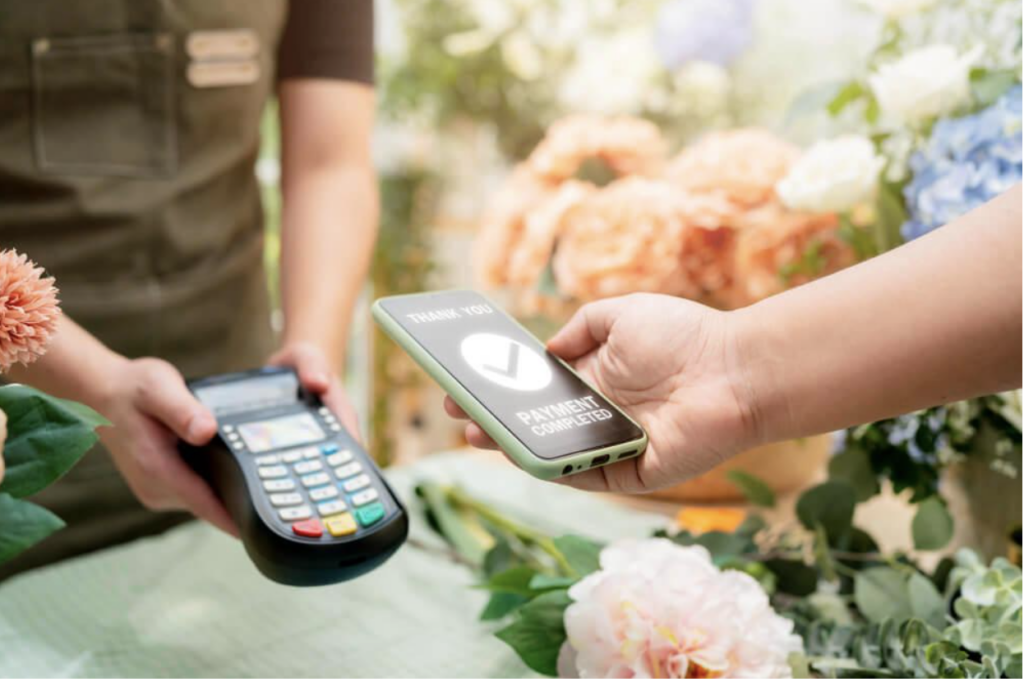5 Best Omnichannel Marketing Tips to Increase Your Business Sales
Omnichannel marketing has become a crucial factor for brands to stay competitive in the retail world. By unifying all channels with a holistic approach, you can create […]
Omnichannel marketing has become a crucial factor for brands to stay competitive in the retail world. By unifying all channels with a holistic approach, you can create a consistent and outstanding customer experience. It helps you to attract more customers and keep them loyal, which contributes to increased revenue and enables your business to expand and reach more milestones. In this article, we’ll look into the 5 best omnichannel marketing tips that are essential to your goal achievements.
What is Omnichannel Marketing?
Omnichannel marketing, as the name suggests, means delivering a seamless, consistent, personalized customer journey for customers across all sales channels. The channels cover both online and offline, including physical stores, websites, eCommerce shops, apps, social media, SMS, and many more. In this way, retailers can reach and sell to customers no matter where they are and increase their satisfaction. Omnichannel marketing helps you connect the dots and drive purchasing decisions.
This kind of marketing strategy lets companies understand better their customers’ interest behaviors in all channels. Thus, it creates an opportunity to build brand awareness in a new platform, boost revenue, and encourage repeat purchases. Implementing an omnichannel strategy helps you to improve the sales funnel, retain customers, and lower customer acquisition costs.
Why do you need a Marketing Plan for an Omnichannel Approach?
More businesses are adopting an omnichannel strategy in their marketing, and here’re the top reasons to do so:
Improve Customer Lifetime Value
Since the cost to acquire new customers is higher than retaining existing ones, you should pay attention to maintaining the current customers. In an omnichannel experience, customers are placed in the center and get incentives to stay with businesses. The right marketing strategy can help you extend lifetime customer value by keeping them engaged with the brand and making more purchases, thus you can increase revenue in the long run.
Reach New Customer Segments
Omnichannel marketing can expose your brand experience to new customer segments. You can reach more customers by being present in different channels and leading potential customers to purchase. It’s important for eCommerce marketers to attract and convert customers so that they can build a larger audience base for growth.
Increase Operational Efficiency
Another benefit of omnichannel marketing is increased efficiency in-store operations and reduced costs. Since all touchpoints are integrated, you can gather all data about customers to serve them better. It also minimizes the guesswork while enabling you to deliver a consistent experience for each customer across all marketing channels. Thus, you can save marketing resources, and boost efficiency.
Improve Inventory Turnover
Overstocking and understocking are huge problems for retailers. But omnichannel can help you avoid them by offering 360-degree visibility into your inventory and your order fulfillment capability. You can know which products to stock in which quantity to optimize the carrying costs and meet customer demands. In this way, you can make smarter replenishment decisions, and never miss a sale opportunity.
5 Best Practices for Omnichannel Marketing
To make the most out of omnichannel marketing, check out these top 5 recommendations:
1. Personalize the Shopping Experience Across Channels
Since customers buy across platforms at their convenience, commerce personalization is essential for your brand to be distinguished. Personalization strategy motivates purchasing decisions and enhances customer loyalty. Segment revealed that 49% of customers would be likely to become repeat buyers if a brand offers them a personalized experience.
With omnichannel marketing, you can track consumer behaviors and create complete customer personas. Once you gain an understanding of customers’ interests and preferences, you can devise a personalized shopping journey for each individual. It also enables you to cross-sell products or services that are relevant and complementary to customers’ orders.
Here’re some ways to personalize customer experience:
- Leverage and connect multiple platforms to personalize the shopping journey and sell seamlessly across channels.
- Allow customers to create an account on your site to track customer interactions, order histories, and payment information. The data can be analyzed to give you valuable insights and determine what makes customers happy.
- Customer accounts also facilitate wishlists and reordering for customers.
- Display banners or pop-ups throughout your online store to feature new products, best sellers, or promotions that may interest customers.
- Optimize the buyer journey for mobile devices by using an intuitive and 100% responsive interface
- Show products that are often bought together at checkout to encourage upselling and cross-selling.
- Offer incentives for bulk purchases such as free shipping or a coupon for the next purchase.
- Use email or SMS marketing to follow up with customers in the post-purchase stage. You can also push relevant product recommendations to a customer based on their previous purchases.
- Push notifications when customers are in nearby locations to your physical store
- Offer O2O strategy like click-and-collect to create the most convenient shopping experience.
When you design an omnichannel strategy, think about how users will interact with the content and navigate around your site or store. Consider the user needs at every touchpoint of the process to provide a positive experience from the moment they click on your website until they place an order. Keep the buying journey consistent and reliable for customers to return next time.
2. Expand with Social Commerce Tools
Shopping on social media, or social commerce, has become increasingly popular. The social commerce industry is expected to grow at a CAGR of 26% from 2021 to 2025, reaching $1.2 trillion by 2025.
Social media platforms are one of the top choices for brands to engage with customers and lead them to purchase. It supports user-generated content, increases the impact of influencers and KOLs, and facilitates shoppers to explore and buy new products. Selling with social commerce helps businesses connect with a new, wide range of customers and boost revenue.
Social media is also a great communication channel for customers to connect with brands and develop their brand love. Once a person feels connected to a brand, they will tend to spend more for the brand over other competitors.
There are various methods to leverage your social commerce. You can start with building awareness with your target audience, strengthen your brand image, and use social selling tactics to nurture leads and develop trust with them. In addition, sync your social media platform to your eCommerce store to create a storefront and create a unified shopping experience. Display QR codes of your social channels at the checkout counter or eCommerce store, so that customers can scan and follow you on social media.
After customers complete a purchase, use an email or SMS message to follow up with them. You can ask them for a review or invite them to join a loyalty program to get exclusive offers. User product reviews on social media contribute significantly to building trust among your customers and be used as testimonials in your eCommerce store or email marketing campaigns.
3. Simplify Payment Across All Channels
Customers want to have different options to pay, whether they’re buying online, in-person, or through text messages. Some popular payment methods include debit and credit cards, but digital payments and buy-now, pay-later (BNPL) are rapidly gaining their positions as modern transaction methods.
It is projected that from 2021 to 2025, there will be 6.5 million new mobile wallet payment users per year, and Gen Z will account for 4 million of them. This number reflects the trend of mobile payment that retailers must capture to provide a seamless purchasing experience. Give them multiple payment options to choose from to reduce the cart-abandonment rate and ensure your checkout is consistent across platforms.
Here are some suggestions for payments:
- Offer Google Pay, Apple Pay, and Afterpay for both online and in-person checkout to give customers quick checkout options.
- Provide payment links on social media channels, emails, or text to lead customers to your checkout page.
- For the temporary physical locations, you can apply QR codes to take customers right to your online checkout page to make quick purchases.
Implement a POS solution to synchronize both online and in-person payments for all channels to create a flexible checkout experience to sell anywhere you do business.
4. Use Loyalty and Discount Incentives to Drive Sales
Applying the right promotions, discounts, and loyalty programs can help you reach customers across channels and make your brand stand out. Discount incentives can convert visitors into customers, and loyalty rewards can retain those customers into repeat transactions. Leveraging these programs will encourage customers to buy more and positively impact your revenue. Here’re how you can do it:
- Generate digital coupons and send to customers via text or email, or social platforms to drive traffic to your physical stores or eCommerce stores.
- Offer discounts to motivate shoppers to take a specific action, such as placing their first orders, leaving a review, or signing up for newsletters.
- Advertise your promotion campaigns in all sales channels, including in-store, online site, or a marketing campaign.
- Once a customer makes a purchase, ask them to join your loyalty program to accumulate tokens and receive rewards or exclusive offers. Consider what makes sense for your business and customers, and what types of incentives will drive sales.
- Promote your loyalty program across channels and persuade customers to join by giving them a taste of what they can expect if they sign up.
5. Launch a Retargeting Campaign
Not every customer is willing to open their wallet at first glance at your store. Therefore, retargeting is crucial to remind the customers of your brand. The more they see your brand, the higher chance they will convert to buyers. Make sure when customers have the need, your brand is at the top of their minds.
Retargeting can drive more traffic to your website, improve your conversion rate, and boost your overall ROI as well. Let’s explore some ideas for retargeting:
- Use website banner ads and social media platforms to show the product that a customer just viewed or just put in the cart.
- Advertise your brand using physical banners in crowded places to get the most visibility
- Use email as a retargeting channel to push relevant product content to customers or remind them of products left in carts
- Apply lead nurturing techniques to send personalized and useful content to your leads. Depending on which stage they’re in the marketing funnel, you can develop suitable tactics to retarget ads on social media or send emails to recover abandoned items in the cart.
- With retargeting, you can track consumers’ behaviors outside your website and gain more understanding about them, even if they didn’t buy anything yet.
To Wrap Up
As customers are expecting more from brands, omnichannel marketing now plays a key role in delivering a seamless user experience for retail businesses. Now that you know the best 5 marketing approach for omnichannel, let’s incorporate them into your strategy to stay ahead of competitors and make customers impressed with your products and services.


















































































